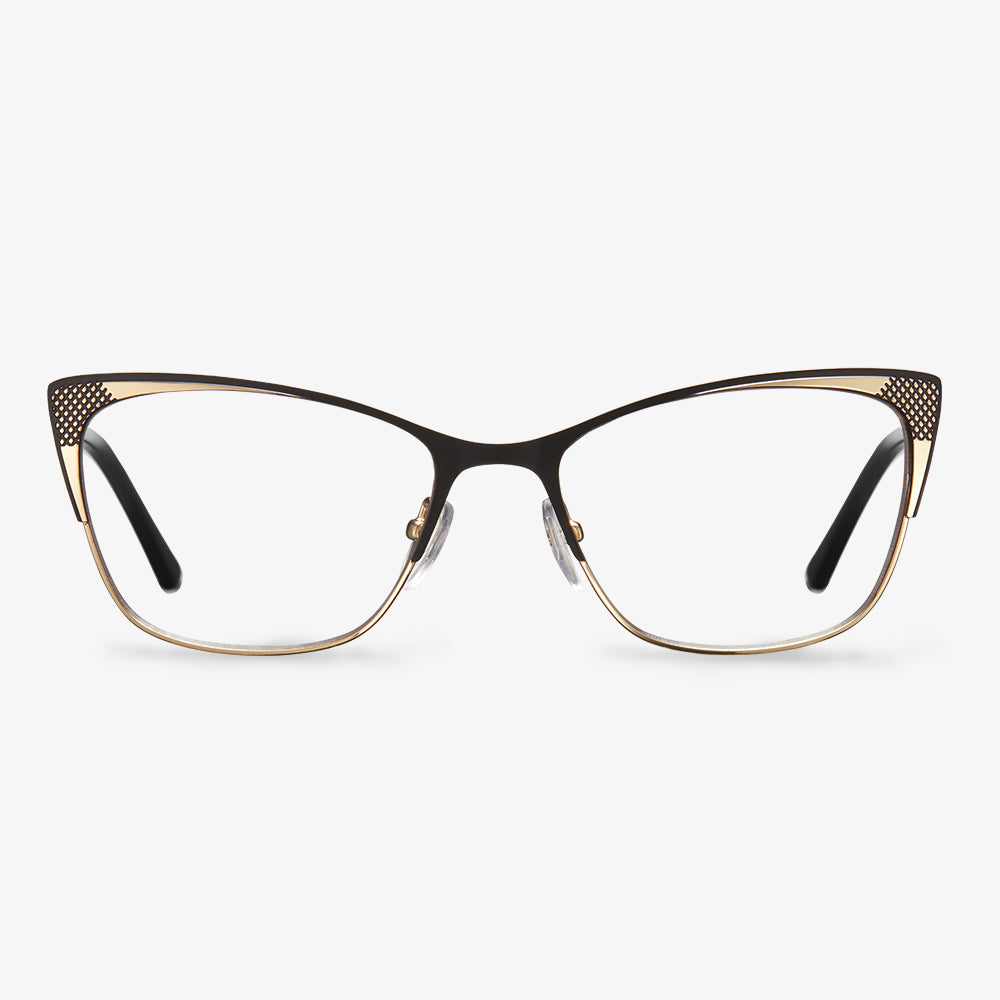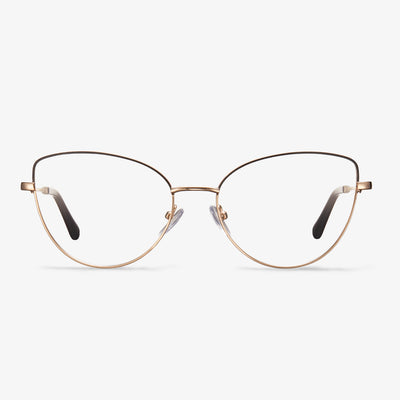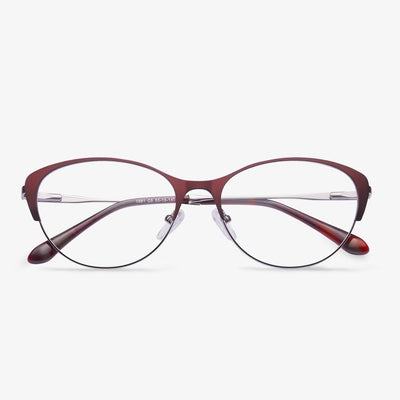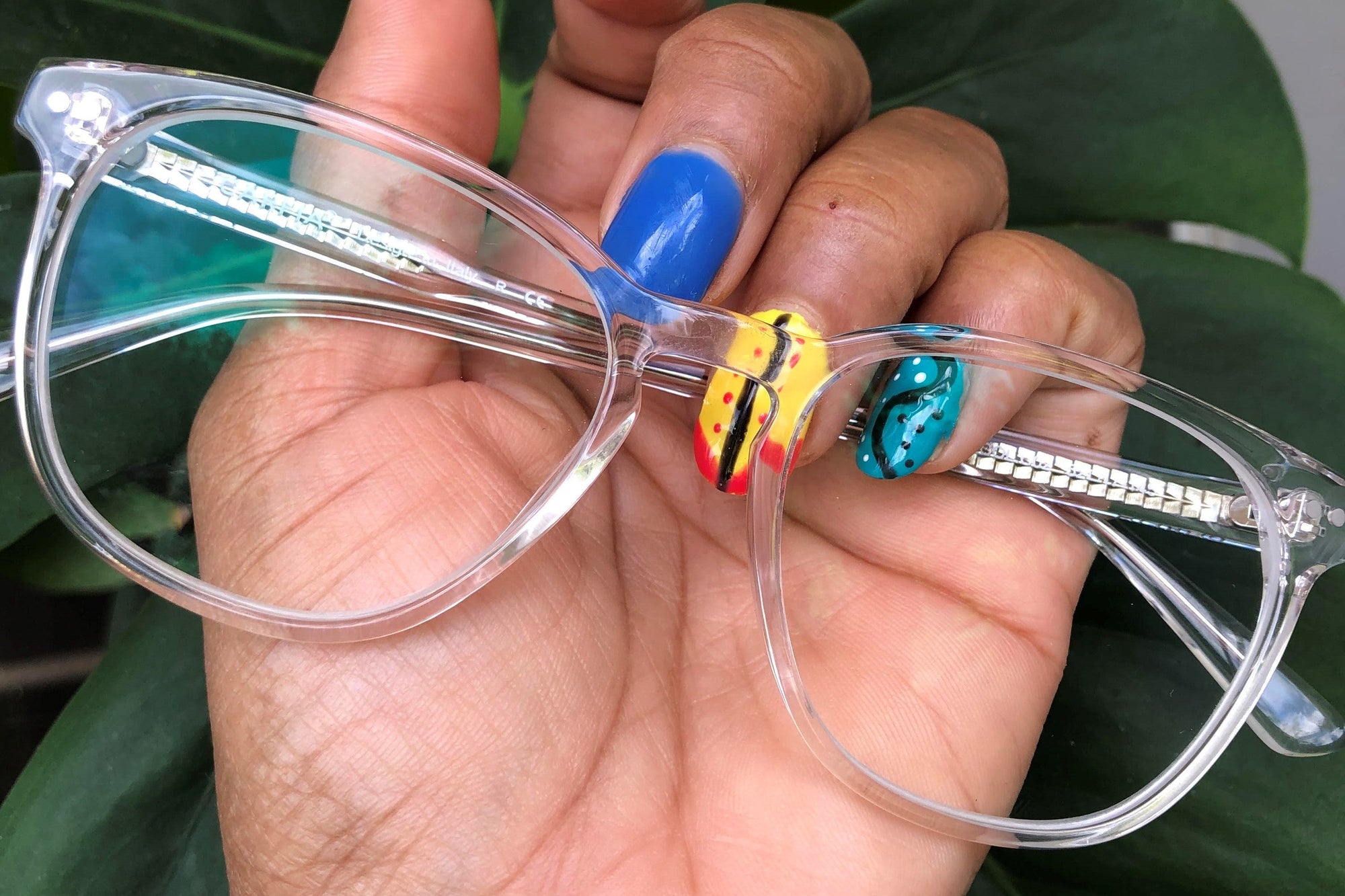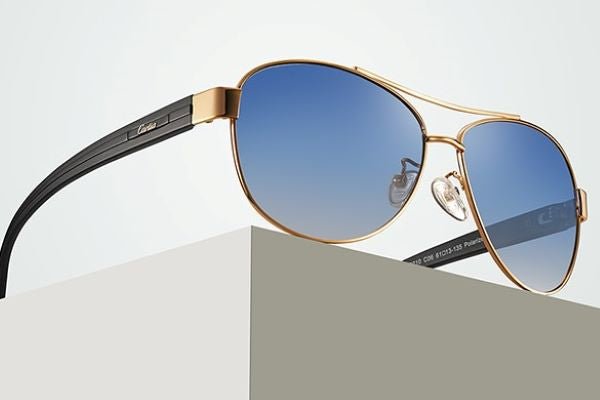Understand the impact of frame selection on the lens
Frame size is an important consideration when using progressive lenses because some progressive lenses work better in frames of different sizes. Since progressive lenses allow you to see at all distances, it's important that the whole range of vision fits within the frame. Therefore, very short lenses and larger lenses are not suitable for progressive lenses.
Disadvantages of Progressive Lens
There are deformation areas under the left and right sides of the lens, which make the image blurry and irregular. It takes 1-3 weeks to get used to it. In addition, it has a narrower field of view in the near and middle distances, and long-term concentration on the narrow focal point can easily make the eyes tired. Suitable for people who need to alternate between distant, medium, and near vision.
However, with the development of science and technology, more and more progressive multifocal glasses have emerged that have a wider field of view, more comfortable wearing, and better meet the needs of eyes. Nowadays, the use rate of progressive lenses among middle-aged and elderly people abroad is quite high. Single-lens and double-lens reading glasses are gradually being replaced by progressive multifocal glasses.
The TR90 Spectacle Frame
TR90 frame is a kind of polymer material spectacle frame with memory, no chemical residue is released, and it meets European requirements for food-grade materials. It is currently an internationally popular ultra-light spectacle frame. TR90 frames have the characteristics of super toughness, impact resistance and abrasion resistance, and low friction coefficient, which can effectively prevent damage to the eyes and face caused by the breakage and friction of the frame during sports. Because of its specific molecular structure, it has good chemical resistance, is not easy to deform in high temperature environment, can withstand high temperature of 350 degrees in a short time, and is not easy to melt and burn. Moreover, the TR90 spectacle frame has a lubricating surface with a density of 1.14-1.15. It will float when placed in salt water. It is lighter than other plastic spectacle frames. It is about half the weight of the sheet frame and 85% of the nylon material. It can reduce the burden on the bridge of the nose and ears.
What is a good progressive lens?
No matter how close the objects you see, the lenses are guaranteed to give you a clear view. Whether it's working with a computer, using a smartphone or tablet screen, or simply reading the newspaper, it's all about bringing a comfortable feeling for you. At the same time, the lenses have greater contrast and clarity. The lenses have been tested and approved by the wearer to ensure customer satisfaction, including quick and easy adaptation.
Step-by-Step Glasses Size Guide
In this section, we will show you how to perform glasses measurements. But the first thing is to know what face shape you have. If you do not know, click here to have a check.
Then you need to know where to find the size measurement of your glasses. In general, you will find numbers that look like this 51-17-145 at the temples of your eyeglasses. Of course, these numbers come at different meanings.
The first number often refers to the lens width. Lens width is the horizontal diameter of the lens at its widest point. In optometry, another term is eye size.
The second number often means the bridge width. Bridge width is the part that joins the two lenses and sits over the nose. Some refer to this as the gap. The bridge width varies between 14 and 24 millimeters.
The third number often means the temple length. The temple is the arm that keeps the sunglasses on your face. That arm extends to the part that hangs on the ears. The length is usually 135, 140, or 145 millimeters.
Lens height measures the size of the lens vertically, that is from the top to the bottom of the lens. Although sizes may differ depending on the brand, the standard size is somewhere between 32 and 38 millimeters.
Refractive index of spectacle lens
It is generally believed that the higher the refractive index, the better the spectacle lens. Such spectacle lenses are relatively thin, and of course, the price is a bit expensive. When the refractive index increases, the direction of the light entering the lens will change greatly, the focus will move to the lens, the focal length will be smaller, and the diopter will become larger. In order to keep the diopter unchanged, it is necessary to reduce the curvature of the lens, that is, to reduce the curvature of the mirror surface, so that the thickness of the lens can be reduced. This is why the larger the refractive index, the thinner the lens is. Under the same premise of other things, the larger the refractive index, the thinner the lens, the lighter and more beautiful the lens, and the higher the price, but the larger the refractive index is not the better.
Advantages of progressive lenses
1. The appearance of the lens is like a single vision lens, and the dividing line of the degree change cannot be seen. Not only is the appearance beautiful, but more importantly, it protects the age privacy of the wearer. There is no need to worry about leaking the age secret due to wearing glasses.(https://www.koalaeye.com/collections/progressive-glasses)
2. Since the change of lens power is gradual, there will be no image jump. It is comfortable to wear and easy to adapt.
3. Because the degree is gradual, the replacement of the adjustment effect is gradually increased according to the shortening of the short distance. There is no adjustment fluctuation, and it is not easy to cause visual fatigue.
4. Clear vision can be obtained at all distances in the visual range. A pair of glasses meet the use of long-distance, near use, and various distances in between. It is especially good for teachers, doctors, music workers, and computer operators because these people not only need to see far and near objects clearly, but most of the time they also need to be able to see objects at intermediate distances such as blackboards, piano scores, and computer screens. This is not possible with lenses other than progressive lenses.
5. At present, both internal and external ophthalmologists agree that young people should wear low-degree convex lenses when reading and writing to reduce near-use adjustment, thereby alleviating or preventing the occurrence and development of myopia. This gives the progressive multifocal lens a new meaning and mission. Physiology found that excessive use of the eyeball adjustment function can form 'accommodative spasm' or pseudo myopia. Continued development can produce longitudinal eye axis elongation and induce 'true myopia' or axial myopia. The external luminosity of the progressive lens can be artificially added to the progressive luminosity. The upper is used for looking far, and the below is used for looking near, which makes the eyeball relax and over-adjust. The ever-changing luminosity of the lens replaces the 'accommodative power' that should have been activated, blocking the vicious circle of adjusting the eye axis elongation, making the eye not easy to fatigue, and slowing the development of myopia.

















